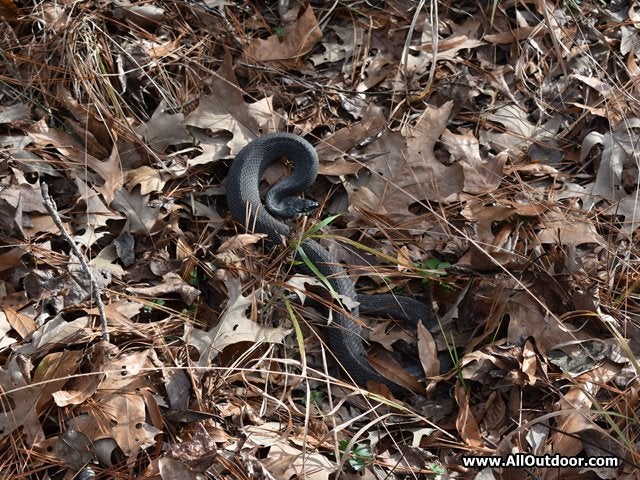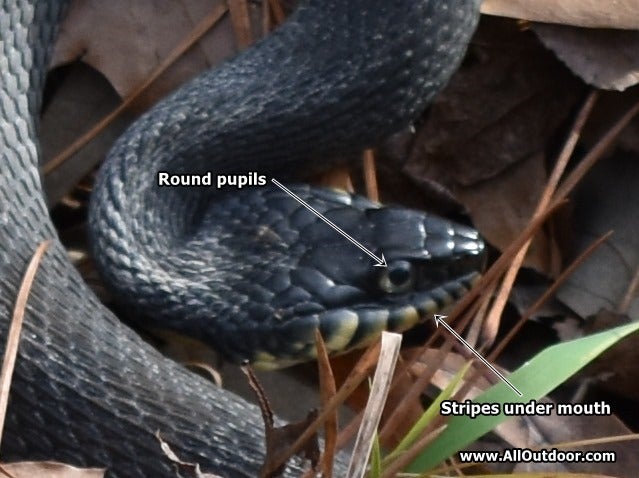Nonvenomous Water Snake or Cottonmouth?
Kevin Felts 01.11.19

Even to someone who spent their early years growing up around bogs, marshes, and swamps, it can be sometimes difficult to tell the difference between a venomous cottonmouth, and a nonvenomous water snake.
When the unknowing person walks up on a dark colored snake near water, it may be difficult to tell the difference. This sometimes results in the killing of nonvenomous water snakes.
There is an old saying: “The only good snake is a dead snake” – that simply is not true. Snakes such as the rat / chicken snake play an important role in controlling rat and mouse populations. This is why I stopped killing chicken snakes and started leaving them in the chicken house.
A few days ago I was walking through a low area which had an old fence line running through it. Decades ago there had been several house on the property, and behind one of the houses was a chicken yard. I had ventured onto the property to find the chicken yard corner post which were railroad crossties.
The purpose of the trip was to look for date nails in the crossties. Up until the late 1960s when a crosstie was put down, a date nail was drove into it. These date nails are around the size of a dime and have two numbers on them. The numbers indicate the year the crosstie was installed. For example, if the date nail had “48” on it, then the crosstie had been put down in 1948.
Rather than looking where I was walking, I was looking through the trees for the old chicken yard. Last time anyone had lived on the land had been in the 1960s. So the area was overgrown with trees, vines and yaupon holly.
All of a sudden the corner of my eye spotted movement near my left boot. The movement was a rather fat, and large dark colored snake.
- Size is important as some people associate water snakes with being slender. This snake had a nice round shape that was indicative of a cottonmouth.
- Shape of the head is also important as there is a common misconception that water snakes have an oval shaped head.
I quickly pulled up the camera and snapped some pictures. The snake stayed still for just a few seconds before slithering into a nearby stream.
After getting home and zooming into the snakes head, guess what, it was a nonvenomous water snake.
Expanded head is a defense mechanism to make the water snake look like a cottonmouth. This is why people can not just look at the head and determine if the snake is venomous.
After having a stand off for a few seconds, the snake slithered away and disappeared under some exposed roots in a creek.
Even though we are in January, on warm days when the sun is shining, snakes may come out to sun themselves and may find something to eat.
Moral of the story? Pay attention to the ground in front of you. Even though I was wearing leather high top steel toed work boots, I nearly stepped on a snake that could had been a venomous cottonmouth.
